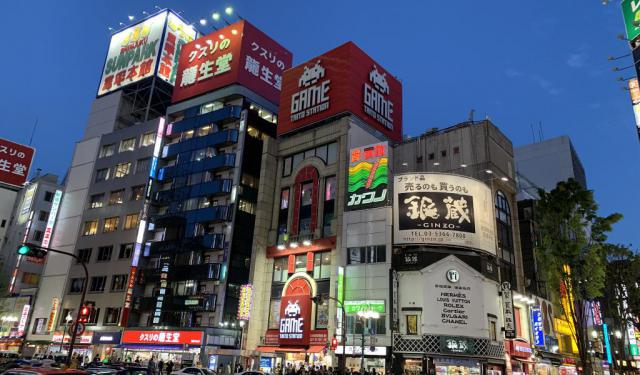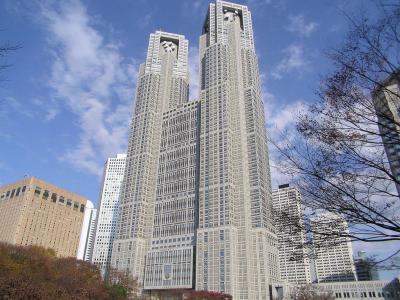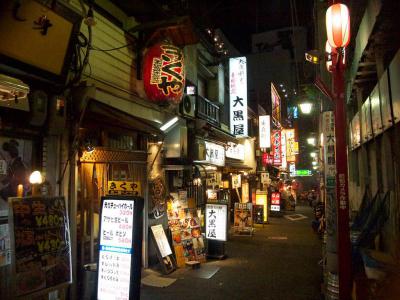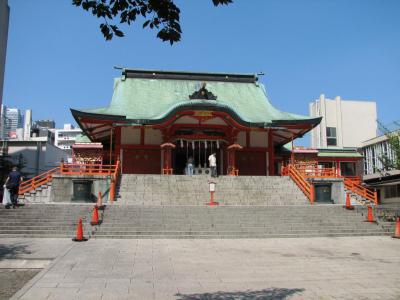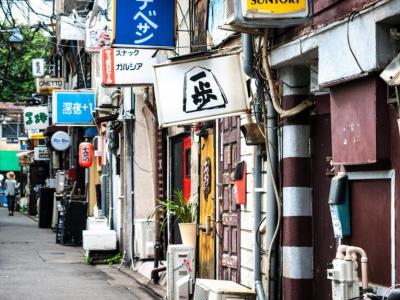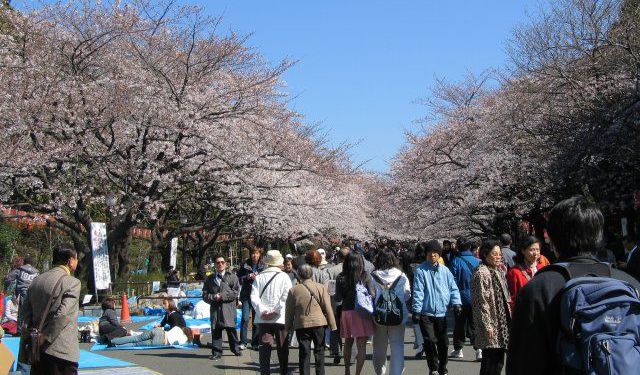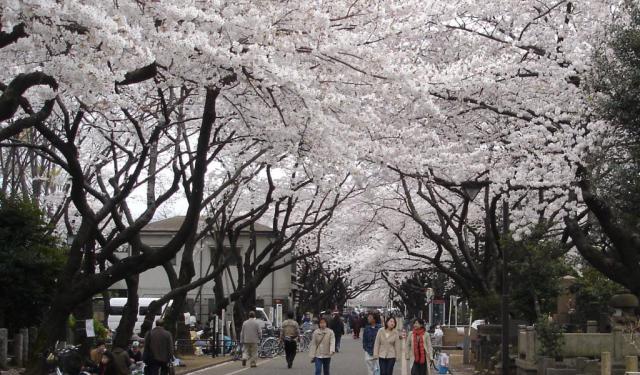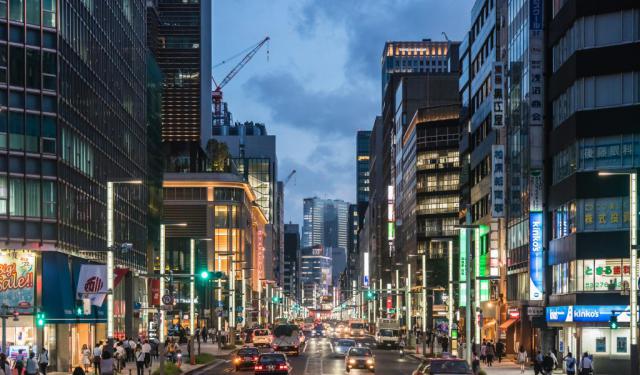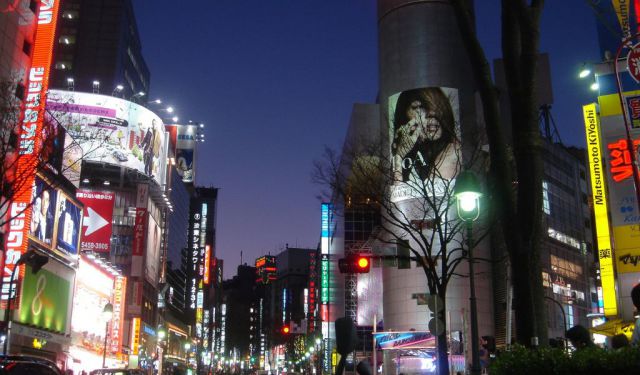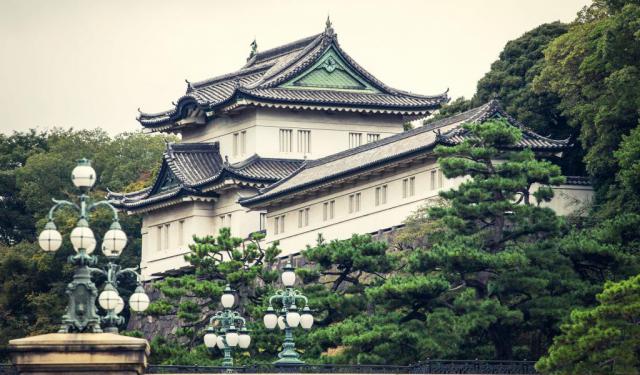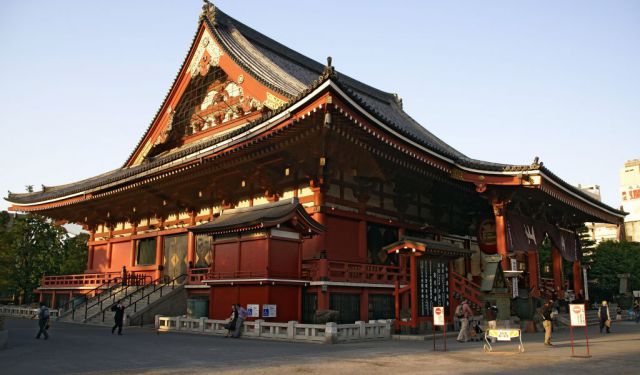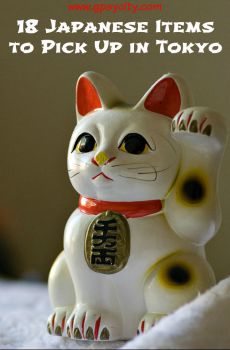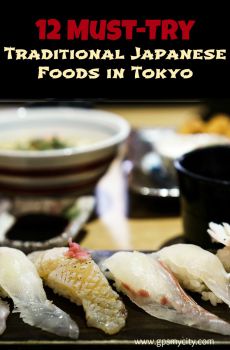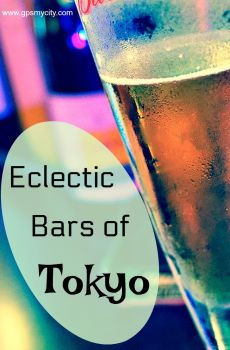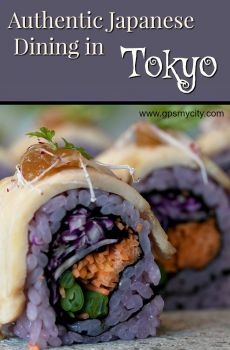Shinjuku Walking Tour (Self Guided), Tokyo
Known as the best entertainment district in Tokyo, Shinjuku abounds in venues where visitors can play, eat, and shop to their hearts' content all day long. Besides the endless list of fun, shopping, and dining options available, the district also offers some truly amazing sightseeing opportunities which are often underrated.
One of its iconic landmarks is the two towers of the Metropolitan Government Office. The freely-accessed observation desks on top of the building offer stunning panoramic views of the city – a magnificent place to appreciate the sheer vastness and beauty of Tokyo.
For those seeking a taste of nostalgia and local street food, Omoide Yokocho, often referred to as "Piss Alley," is a must-visit. Don't be dissuaded by the name! Here, you can savor traditional Japanese dishes and experience the bustling atmosphere of a bygone era.
The Godzilla Head, perched atop the Toho Building, captures the attention of pop culture enthusiasts. It's a quirky sightseeing spot, especially at night when it is illuminated, making it a unique addition to your Shinjuku adventure.
History buffs will enjoy the Samurai Museum, where you can delve into Japan's rich samurai tradition through an impressive collection of artifacts and exhibitions.
Shinjuku Golden Gai is a maze of narrow alleyways lined with cozy, intimate bars and eateries. It's a fantastic place to experience the local nightlife and interact with fellow travelers and locals.
In contrast to the bustling urban atmosphere, the Hanazono Shrine provides a serene and spiritual experience. This peaceful oasis offers a quiet escape from the city's hustle and bustle.
Nature lovers can explore the Shinjuku Gyoen National Garden, a vast green space in the heart of the district. It's an ideal spot for a leisurely stroll, a picnic, or enjoying the seasonal beauty of cherry blossoms or colorful foliage.
Visitors of all stripes can easily find something to their liking in Shinjuku. Whether you're exploring the past, embracing the present, or simply seeking relaxation, this dynamic part of Tokyo covers it all. So, pack your bags and embark on a memorable self-guided walking journey to Shinjuku, where you'll discover a fusion of tradition and modernity.
One of its iconic landmarks is the two towers of the Metropolitan Government Office. The freely-accessed observation desks on top of the building offer stunning panoramic views of the city – a magnificent place to appreciate the sheer vastness and beauty of Tokyo.
For those seeking a taste of nostalgia and local street food, Omoide Yokocho, often referred to as "Piss Alley," is a must-visit. Don't be dissuaded by the name! Here, you can savor traditional Japanese dishes and experience the bustling atmosphere of a bygone era.
The Godzilla Head, perched atop the Toho Building, captures the attention of pop culture enthusiasts. It's a quirky sightseeing spot, especially at night when it is illuminated, making it a unique addition to your Shinjuku adventure.
History buffs will enjoy the Samurai Museum, where you can delve into Japan's rich samurai tradition through an impressive collection of artifacts and exhibitions.
Shinjuku Golden Gai is a maze of narrow alleyways lined with cozy, intimate bars and eateries. It's a fantastic place to experience the local nightlife and interact with fellow travelers and locals.
In contrast to the bustling urban atmosphere, the Hanazono Shrine provides a serene and spiritual experience. This peaceful oasis offers a quiet escape from the city's hustle and bustle.
Nature lovers can explore the Shinjuku Gyoen National Garden, a vast green space in the heart of the district. It's an ideal spot for a leisurely stroll, a picnic, or enjoying the seasonal beauty of cherry blossoms or colorful foliage.
Visitors of all stripes can easily find something to their liking in Shinjuku. Whether you're exploring the past, embracing the present, or simply seeking relaxation, this dynamic part of Tokyo covers it all. So, pack your bags and embark on a memorable self-guided walking journey to Shinjuku, where you'll discover a fusion of tradition and modernity.
How it works: Download the app "GPSmyCity: Walks in 1K+ Cities" from Apple App Store or Google Play Store to your mobile phone or tablet. The app turns your mobile device into a personal tour guide and its built-in GPS navigation functions guide you from one tour stop to next. The app works offline, so no data plan is needed when traveling abroad.
Shinjuku Walking Tour Map
Guide Name: Shinjuku Walking Tour
Guide Location: Japan » Tokyo (See other walking tours in Tokyo)
Guide Type: Self-guided Walking Tour (Sightseeing)
# of Attractions: 5
Tour Duration: 1 Hour(s)
Travel Distance: 2.1 Km or 1.3 Miles
Author: DanaOffice
Sight(s) Featured in This Guide:
Guide Location: Japan » Tokyo (See other walking tours in Tokyo)
Guide Type: Self-guided Walking Tour (Sightseeing)
# of Attractions: 5
Tour Duration: 1 Hour(s)
Travel Distance: 2.1 Km or 1.3 Miles
Author: DanaOffice
Sight(s) Featured in This Guide:
- Tokyo Metropolitan Government Buildings
- Omoide Yokocho (Piss Alley)
- Godzilla Head
- Hanazono Shrine
- Shinjuku Golden Gai
1) Tokyo Metropolitan Government Buildings
The Tokyo Metropolitan Government Building is a complex of three buildings, each occupying its own city block. It serves as the headquarters for the Tokyo metropolitan government and is well-known for the breathtaking views it offers from its observation decks, which are open to the public at no cost.
Locals often refer to this building as the "Tax Tower," and it stands as one of the tallest structures in the city. The renowned architect Kenzo Tange designed it to resemble a computer chip. The main tower consists of 48 floors, with a division on the 33rd floor. The central structure houses the Tokyo Metropolitan Assembly building, with eight floors, including one underground, and the second main building has 37 floors, including three below ground.
Each of the two observation decks in these buildings features cafes and gift shops, and visitors can easily access them in less than a minute thanks to high-speed elevators. Both decks provide stunning views of the city and its surroundings. Early morning visitors can even catch a glimpse of Mount Fuji and other mountains on clear days before the city's smoke and smog obscure the scenery. The south observation deck offers views of the Odaiba Entertainment District during the day, while the north observation deck provides panoramic views of the illuminated city at night.
Why You Should Visit:
One of the best views you can get in the city and even better still, it is completely free of charge with no time limit on how long you can stay.
Tip:
If you're looking for a free guided tour full of interesting background stories on Tokyo and Japan, just go to the tourist office downstairs from the main entrance.
Locals often refer to this building as the "Tax Tower," and it stands as one of the tallest structures in the city. The renowned architect Kenzo Tange designed it to resemble a computer chip. The main tower consists of 48 floors, with a division on the 33rd floor. The central structure houses the Tokyo Metropolitan Assembly building, with eight floors, including one underground, and the second main building has 37 floors, including three below ground.
Each of the two observation decks in these buildings features cafes and gift shops, and visitors can easily access them in less than a minute thanks to high-speed elevators. Both decks provide stunning views of the city and its surroundings. Early morning visitors can even catch a glimpse of Mount Fuji and other mountains on clear days before the city's smoke and smog obscure the scenery. The south observation deck offers views of the Odaiba Entertainment District during the day, while the north observation deck provides panoramic views of the illuminated city at night.
Why You Should Visit:
One of the best views you can get in the city and even better still, it is completely free of charge with no time limit on how long you can stay.
Tip:
If you're looking for a free guided tour full of interesting background stories on Tokyo and Japan, just go to the tourist office downstairs from the main entrance.
2) Omoide Yokocho (Piss Alley)
Omoide Yokocho is sometimes referred to as Piss Alley, but tourists shouldn't let the name dissuade them from a visit. Another name commonly used for Omoide Yokocho is "Memory Lane," which may be more fitting for visitors who wish to make lasting memories of their trip to Tokyo.
Omoide Yokocho is a historic alley where tourists can find about 60 tiny bars and restaurant stands. The street is too narrow for more than two people to pass each other, which makes for an intimate and memorable meal.
Many of the vendors are open during the daytime, but the alley comes alive at night. No matter what time of the day or night a tourist visits, they should make sure to stop by for a quick meal or drink so they can see and experience an area that is unique to Tokyo.
Wondering where the nickname Piss Alley originated? The large number of bars and lack of public restrooms created a necessity for patrons to relieve themselves somewhere. That practice is no longer common. There is even a public restroom in the alley.
Omoide Yokocho is a historic alley where tourists can find about 60 tiny bars and restaurant stands. The street is too narrow for more than two people to pass each other, which makes for an intimate and memorable meal.
Many of the vendors are open during the daytime, but the alley comes alive at night. No matter what time of the day or night a tourist visits, they should make sure to stop by for a quick meal or drink so they can see and experience an area that is unique to Tokyo.
Wondering where the nickname Piss Alley originated? The large number of bars and lack of public restrooms created a necessity for patrons to relieve themselves somewhere. That practice is no longer common. There is even a public restroom in the alley.
3) Godzilla Head
Godzilla Head is one of the most recent tourist attractions in Tokyo. It is a sculpture that was created for the 1992 film "Godzilla vs. Mothra." The 80-ton head is located on the Shinjuku Toho Building's Hotel Gracery Shinjuku's Godzilla Terrace.
Tourist can spot Godzilla Head from a distance on Kabukicho Ichiban-gai Street, but the best views are on Central Road. The area where the streets meet is called Godzilla Road in honor of the statue.
The public art piece was put on display in 2015. It was created by Toho Eizo Bijutsu, the producer of "Godzilla vs. Mothra." The life-size model has a height of about 39 feet (12 meters). It has been named as one of the best public art sculptures by "Time Out Tokyo."
The head is clearly visible from street level. However, those who want a closer view can head inside the building. Patrons of the cafe or hotel are welcome to head to the terrace for a full view of the massive sculpture.
Godzilla Head isn't a static art piece. From noon through 8 PM there are hourly roars. Music and roaring blares out to the city streets while Godzilla's eyes light up and smoke emits from its mouth. The show can be seen from the terrace or from the street below.
Tourist can spot Godzilla Head from a distance on Kabukicho Ichiban-gai Street, but the best views are on Central Road. The area where the streets meet is called Godzilla Road in honor of the statue.
The public art piece was put on display in 2015. It was created by Toho Eizo Bijutsu, the producer of "Godzilla vs. Mothra." The life-size model has a height of about 39 feet (12 meters). It has been named as one of the best public art sculptures by "Time Out Tokyo."
The head is clearly visible from street level. However, those who want a closer view can head inside the building. Patrons of the cafe or hotel are welcome to head to the terrace for a full view of the massive sculpture.
Godzilla Head isn't a static art piece. From noon through 8 PM there are hourly roars. Music and roaring blares out to the city streets while Godzilla's eyes light up and smoke emits from its mouth. The show can be seen from the terrace or from the street below.
4) Hanazono Shrine
Hanazono Shrine is a Shinto shrine that was founded in the mid-17th century. Though the current shrine was rebuilt after destruction during World War II, it retains much of its character from previous centuries.
The shrine is dedicate to Inari, the God of Worldly Success. Because of this, it is a popular place for business-people to travel.
The shrine itself is quiet and serene. However, it is known for its regular celebrations and festivals. Visitors may plan their trips to Tokyo around the Setsubun, National Tournament Mochi or Two Horse festivals in February. They might attend the Koxinga Festival in March, the Flower Festival in April, Reitaisai in May or the Shinto Purification in June. Obon occurs in August and the Cock Festival in November.
Visitors can head to the Hanazono Shrine any time of the night or day. It is well lit in the evenings and always free to enter.
The shrine is dedicate to Inari, the God of Worldly Success. Because of this, it is a popular place for business-people to travel.
The shrine itself is quiet and serene. However, it is known for its regular celebrations and festivals. Visitors may plan their trips to Tokyo around the Setsubun, National Tournament Mochi or Two Horse festivals in February. They might attend the Koxinga Festival in March, the Flower Festival in April, Reitaisai in May or the Shinto Purification in June. Obon occurs in August and the Cock Festival in November.
Visitors can head to the Hanazono Shrine any time of the night or day. It is well lit in the evenings and always free to enter.
5) Shinjuku Golden Gai (must see)
Shinjuku Golden Gai is a compact district in Tokyo, renowned for its unique architecture and vibrant nightlife scene. This area consists of six interconnected narrow alleys, linked by even narrower passages that can barely accommodate a single person. Remarkably, more than 200 small bars, clubs, and eateries are crammed into this confined space.
Before 1958, Shinjuku Golden Gai had a reputation for prostitution, but it transitioned into a hub for drinking establishments after the practice was outlawed. In the 1980s, Tokyo witnessed a series of arson incidents orchestrated by organized crime groups to facilitate land acquisition by developers. However, Shinjuku Golden Gai managed to survive due to its residents taking turns to protect the area during nighttime.
The alleys within this district are considered private roads, and taking photographs or recording videos for any purpose on the streets is strictly prohibited without the permission of the area's business promotion association.
What distinguishes the bars in Shinjuku Golden Gai is the diverse and artistic clientele they attract. This locale is renowned as a gathering spot for creative individuals such as musicians, artists, directors, writers, academics, and actors. Many of these bars initially admit only regular patrons, who are typically introduced by an existing customer. Nevertheless, some establishments actively seek to welcome non-regulars, with some even going the extra mile to cater to overseas tourists by displaying signs and price lists in English.
Each of the bars often has a distinct theme, whether it's centered around jazz, R&B, karaoke, punk rock, or flamenco. The walls of these establishments are often adorned with a mishmash of movie, film, and concert posters. Others cater to customers with specific interests, such as board games, exploitation films, or horse racing. Most of these bars don't open until around 9 or 10 pm, contributing to a tranquil ambiance during the daytime and early evening hours.
Before 1958, Shinjuku Golden Gai had a reputation for prostitution, but it transitioned into a hub for drinking establishments after the practice was outlawed. In the 1980s, Tokyo witnessed a series of arson incidents orchestrated by organized crime groups to facilitate land acquisition by developers. However, Shinjuku Golden Gai managed to survive due to its residents taking turns to protect the area during nighttime.
The alleys within this district are considered private roads, and taking photographs or recording videos for any purpose on the streets is strictly prohibited without the permission of the area's business promotion association.
What distinguishes the bars in Shinjuku Golden Gai is the diverse and artistic clientele they attract. This locale is renowned as a gathering spot for creative individuals such as musicians, artists, directors, writers, academics, and actors. Many of these bars initially admit only regular patrons, who are typically introduced by an existing customer. Nevertheless, some establishments actively seek to welcome non-regulars, with some even going the extra mile to cater to overseas tourists by displaying signs and price lists in English.
Each of the bars often has a distinct theme, whether it's centered around jazz, R&B, karaoke, punk rock, or flamenco. The walls of these establishments are often adorned with a mishmash of movie, film, and concert posters. Others cater to customers with specific interests, such as board games, exploitation films, or horse racing. Most of these bars don't open until around 9 or 10 pm, contributing to a tranquil ambiance during the daytime and early evening hours.
Walking Tours in Tokyo, Japan
Create Your Own Walk in Tokyo
Creating your own self-guided walk in Tokyo is easy and fun. Choose the city attractions that you want to see and a walk route map will be created just for you. You can even set your hotel as the start point of the walk.
Ueno Park Walking Tour
Ueno Park is Tokyo’s ultimate mashup of history, nature, and culture! It started as part of the powerful Kanei-ji Temple during the Edo period, which lasted from 1603 to 1868. Back then, samurais roamed and shoguns ruled the country. In the 1870s, as Japan embraced modernization, the area was gentrified, turning into a public park. Today, it's a major attraction for travelers craving both a... view more
Tour Duration: 2 Hour(s)
Travel Distance: 3.9 Km or 2.4 Miles
Tour Duration: 2 Hour(s)
Travel Distance: 3.9 Km or 2.4 Miles
Yanaka Walking Tour
A bit away from Downtown Tokyo, Yanaka is a hidden spot with a lot to offer. This neighborhood is known for its narrow alleys, traditional wooden houses, izakaya pubs, and old-style shops. Having largely escaped the damage of World War II, Yanaka exudes the last-century charm of Tokyo's old town ambiance.
With a high concentration of ancient places of worship in the district, the air here... view more
Tour Duration: 1 Hour(s)
Travel Distance: 1.6 Km or 1 Miles
With a high concentration of ancient places of worship in the district, the air here... view more
Tour Duration: 1 Hour(s)
Travel Distance: 1.6 Km or 1 Miles
Ginza Shopping Tour
Often compared with New York's Fifth Avenue, Ginza is the most luxurious shopping district in Tokyo. Its two main avenues running through the area, Chuo-dori Street and Harumi-dori Street, are lined with high-end boutiques, enormous department stores, and flagship stores of renowned international brands carrying a wealth of merchandise, from fashion and jewelry to electronics and cosmetics.
... view more
Tour Duration: 1 Hour(s)
Travel Distance: 1.6 Km or 1 Miles
... view more
Tour Duration: 1 Hour(s)
Travel Distance: 1.6 Km or 1 Miles
Shibuya Walking Tour
Ah, Shibuya... If Tokyo were a giant party, this district would be the dance floor. A neon-lit playground where fashion-forward teens, pop culture fiends, and wide-eyed tourists collide in a kaleidoscope of color, style, and pure urban energy.
But before it became Japan’s trendsetting capital, Shibuya had a different kind of ruling class-the Shibuya clan. Back in the 1160s, they ran this... view more
Tour Duration: 2 Hour(s)
Travel Distance: 3.9 Km or 2.4 Miles
But before it became Japan’s trendsetting capital, Shibuya had a different kind of ruling class-the Shibuya clan. Back in the 1160s, they ran this... view more
Tour Duration: 2 Hour(s)
Travel Distance: 3.9 Km or 2.4 Miles
Tokyo Imperial Palace Walking Tour
Welcome to Tokyo’s greenest royal secret-The Imperial Palace-a majestic sprawl of tradition, tranquility, and top-tier landscaping. This is where Japan’s Emperor hangs his crown (figuratively speaking), nestled right in the city’s beating heart and surrounded by moats like something straight out of a storybook... or a really classy samurai movie.
Now, before you grab your crown and march... view more
Tour Duration: 2 Hour(s)
Travel Distance: 2.7 Km or 1.7 Miles
Now, before you grab your crown and march... view more
Tour Duration: 2 Hour(s)
Travel Distance: 2.7 Km or 1.7 Miles
Asakusa District Walking Tour
Asakusa - Tokyo’s delightful time machine with a modern metro stop. This is one of the rare areas in the city where you will find narrow alleys, traditional shops, temple markets, and geisha whispers still echoing off the rooftops. Think of it as Old Tokyo in HD.
Back in the Edo period (between 1603 and 1868), Asakusa got its groove thanks to some very rich guys - the rice storehouse keepers... view more
Tour Duration: 1 Hour(s)
Travel Distance: 1.1 Km or 0.7 Miles
Back in the Edo period (between 1603 and 1868), Asakusa got its groove thanks to some very rich guys - the rice storehouse keepers... view more
Tour Duration: 1 Hour(s)
Travel Distance: 1.1 Km or 0.7 Miles
Useful Travel Guides for Planning Your Trip
Tokyo Souvenirs: 18 Authentic Japanese Products to Buy in Tokyo
The list of the delights of Tokyo is long and being exposed to just some of them, at some point, can make one addicted (just as the Charles Winchester III character from the M.A.S.H. series). Still, you can always "prolong" the experience and enjoy the effects of it more, if bring home...
12 Must-Try Traditional Japanese Foods in Tokyo
Cuisine is an integral part of any local culture, and no trip to Tokyo is complete without tasting the authentic, Tokyo-made Japanese food. This directory offers information about the traditional dishes and drinks available in Tokyo to help visitors better understand the local food culture and make...
Eclectic Bars of Tokyo
Time to tap glasses and share laughs in Tokyo, a city of wondrous variety! In this app is an insider's guide to attractive drinking bars, and places nearby that are worthy experiences (theatres, shrines, shopping districts, etc).
Each bar has been carefully chosen throughout this endless...
Authentic Japanese Dining in Tokyo
Tokyo is home to literally a million eating places, so finding a truly authentic Japanese style restaurant with an English language menu can be rather tricky. We have compiled a list of easy to find Japanese style restaurants covering a range of culinary specialties to make your taste-buds tingle...
The Most Popular Cities
/ view all
